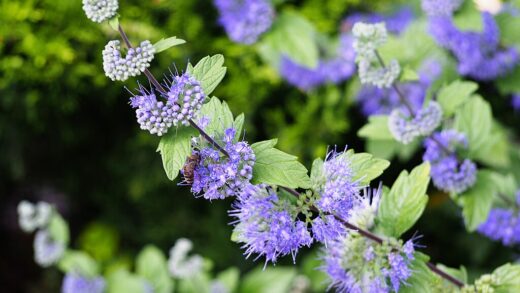Pruning is a fundamental horticultural practice that, when performed correctly and at the appropriate time, is essential for maintaining the health, vigor, and aesthetic appeal of ‘The Fairy’ rose. While this particular variety is known for its relatively low-maintenance nature and does not require the intensive, complex pruning of some other rose types, a thoughtful approach to cutting it back will yield significant rewards. The primary objectives of pruning this ground cover rose are to remove any dead or diseased wood, improve air circulation within the plant to prevent disease, encourage the production of new, flower-bearing growth, and maintain its desirable, gracefully mounding shape. A well-pruned rose is not only more attractive but also a more prolific bloomer.
Many gardeners, especially those new to roses, can be intimidated by the prospect of pruning, fearing they will cut too much or in the wrong place. However, ‘The Fairy’ is a forgiving shrub, and its natural growth habit makes the process quite straightforward. Unlike hybrid tea roses, which require precise cuts to encourage long-stemmed blooms, the goal with a ground cover rose is more about overall shaping and renewal. The pruning process should be seen not as a harsh attack on the plant, but as a collaborative effort to guide its growth and ensure its long-term vitality.
The timing of pruning is a critical factor for success. The main annual pruning should be conducted during the plant’s dormant season, typically in late winter or early spring, just before new growth begins. This timing allows for a clear view of the plant’s structure without the obstruction of leaves and minimizes the risk of new cuts being damaged by severe cold. In addition to this major annual prune, some minor trimming and maintenance, such as deadheading, can be performed throughout the growing season to encourage continuous flowering and keep the plant looking tidy.
This article will provide a comprehensive, step-by-step guide to pruning and cutting back your ‘The-Fairy’ rose. We will cover the essential tools needed for the job, detail the process for the main annual pruning in late winter, explain the benefits and techniques of deadheading during the blooming season, and discuss the concept of renewal pruning for rejuvenating older, overgrown shrubs. By mastering these simple techniques, you can ensure your ground cover rose remains a healthy, beautifully shaped, and abundantly flowering feature in your garden for many years.
The best time for pruning
The timing of your primary pruning activities is crucial for the health and flowering performance of ‘The Fairy’ rose. The most significant pruning session should be scheduled for the late dormant season, which generally falls in late winter or very early spring. The ideal window is after the absolute worst of the winter cold has passed but before the plant has begun to actively push out new growth. A good rule of thumb in many regions is to wait until the buds on the canes begin to swell slightly, but have not yet opened. In many climates, this coincides with the blooming of forsythia bushes, a traditional indicator for gardeners that it is time to prune roses.
More articles on this topic
Pruning during this late dormant period offers several distinct advantages. Firstly, with no leaves on the plant, you have an unobstructed view of its entire structure, making it much easier to identify and remove any dead, damaged, or crossing canes. Secondly, by waiting until the threat of severe, deep freezes has diminished, you avoid the risk of cold weather damaging the fresh tissues exposed by your pruning cuts. Pruning too early in the winter can leave the plant vulnerable to dieback from these wounds.
Thirdly, pruning just before the spring growth flush directs the plant’s stored energy into producing strong, new shoots from the buds that you have chosen to leave behind. This results in a vigorous and healthy start to the growing season, with the new growth being channeled exactly where you want it. If you were to prune in the autumn, you would risk stimulating new growth that would not have time to harden off before winter, leading to inevitable frost damage and a waste of the plant’s energy reserves. Therefore, autumn pruning of ‘The Fairy’ rose should be strictly avoided, with the exception of removing any exceptionally long canes that could be whipped around by winter winds and damage the base of the plant.
Throughout the growing season, a different type of pruning, known as deadheading, can be performed. This involves the removal of spent flowers and is done to encourage the plant to produce more blooms. This lighter form of trimming can be done continuously from the end of the first flush of flowers until early autumn. As autumn approaches, you should cease deadheading to allow the plant to form rose hips, which signals to the plant that it should begin preparing for winter dormancy.
Essential tools and techniques
Before you begin pruning, it is essential to have the right tools, and to ensure they are clean and sharp. The most important tool for pruning ‘The Fairy’ rose is a good pair of bypass pruners. Bypass pruners have two curved blades that pass by each other, much like scissors, making a clean, precise cut that damages the plant tissue less than anvil-style pruners. For any canes that are too thick for your hand pruners (typically larger than a half-inch in diameter), a pair of long-handled loppers will provide the necessary leverage. For removing very old, thick canes at the base of the plant, a small, sharp pruning saw may be required.
More articles on this topic
It is critically important that your tools are sharp. A sharp blade makes a clean cut that will heal quickly, while a dull blade will crush and tear the plant’s stems, creating a ragged wound that is more susceptible to disease. It is also equally important to ensure your tools are clean. Before you start pruning, and especially when moving between different plants, disinfect your blades with a solution of 10% bleach or by wiping them down with rubbing alcohol. This simple step helps to prevent the spread of plant diseases from one part of the plant to another, or from one plant to the next. Finally, a sturdy pair of gardening gloves, preferably with long cuffs, is essential to protect your hands and arms from the rose’s thorns.
When making a pruning cut on a cane, the technique is important. The cut should be made at a 45-degree angle, about one-quarter of an inch above an outward-facing bud. An outward-facing bud is one that is pointing away from the center of the shrub. Making the cut here encourages the new shoot to grow outwards, which helps to maintain an open, vase-like shape and improves air circulation within the plant. The 45-degree angle of the cut allows water to run off the surface, which can help to prevent rot from setting in on the wound.
Always approach pruning with a clear plan. Start with the “three D’s”: remove any wood that is Dead, Damaged, or Diseased. Dead canes will be brown or grey and brittle, while healthy canes are typically green or reddish and firm. Damaged canes may be broken or have been scraped and wounded. Diseased canes may show signs of cankers or black lesions. Cut all of this unhealthy wood back to a point where the cane is healthy—indicated by a clean, white pith in the center of the stem—or remove it entirely at its point of origin. This initial cleanup is the most important step in any pruning job.
The annual spring pruning process
After you have completed the initial cleanup of dead, damaged, and diseased wood, the next step in the annual spring pruning of your ‘The Fairy’ rose is to address the overall structure of the plant. Look for any canes that are crossing over or rubbing against each other. This rubbing can create wounds that serve as entry points for diseases. In most cases, you should choose one of the crossing canes to remove entirely, typically the weaker, thinner, or less well-placed of the two. The goal is to create a well-spaced framework of healthy canes with good air circulation between them.
‘The Fairy’ rose is a polyantha shrub that blooms on new wood, meaning the flowers are formed on the growth produced in the current season. Therefore, pruning in the spring encourages the development of this new, flower-bearing wood. After sorting out the structural issues, you can proceed to shorten the remaining healthy canes. A general guideline for this type of shrub rose is to reduce its overall size by about one-third to one-half. This may seem drastic, but this “hard” pruning will stimulate the plant to produce vigorous new growth from its base, resulting in a fuller, healthier shrub with more flowers.
The exact amount you cut back can be tailored to your desired outcome. If you want to maintain a smaller, more compact shrub, you can prune it back more severely, perhaps to within 6-12 inches of the ground. If you prefer a larger, more sprawling plant, a lighter pruning that only removes about a third of the height will be sufficient. Do not be afraid to cut this rose back; it is exceptionally vigorous and will respond well to a hard prune. The goal is to leave a framework of healthy, well-spaced canes of varying ages.
As you prune, step back from the plant periodically to assess its overall shape. You are aiming for a balanced, open-centered form. For an older, more established ‘The Fairy’ rose, you might also consider renewal pruning, which involves completely removing one or two of the oldest, thickest, least productive canes right down to the base of the plant. This encourages the rose to produce strong new canes from the crown, effectively renewing the shrub over a period of a few years and maintaining its vigor.
Deadheading for continuous blooms
Deadheading is the practice of removing spent flowers from the plant during the growing season. While not strictly necessary for the survival of ‘The Fairy’ rose—it will rebloom even if you do nothing—regular deadheading provides several significant benefits. Aesthetically, it keeps the plant looking clean and tidy by removing the browning, withered old blossoms. More importantly from a horticultural perspective, deadheading prevents the plant from expending its energy on producing seeds (rose hips) and instead redirects that energy into producing more flowers. This results in a much more prolific and continuous floral display throughout the season.
‘The Fairy’ rose produces its flowers in large clusters, or sprays. The individual flowers within a cluster do not all open and fade at the same time. The simplest method of deadheading is to simply snap off the individual faded blooms with your fingers as they finish. This keeps the cluster looking fresh while the remaining buds continue to open. Once all the flowers in a single cluster have faded, you should remove the entire spent flower head.
To remove a spent cluster, follow its stem down to the first leaf that has five leaflets. In roses, the leaves closest to the flower often have only three leaflets, while the more mature leaves further down the stem have five. Using your sharp bypass pruners, make your cut about a quarter of an inch above the junction where this five-leaflet leaf is attached to the stem. This is typically a point on the stem where a new, flower-bearing shoot will emerge, so cutting here encourages the plant to rebloom more quickly.
This process of deadheading should be done regularly throughout the spring and summer months. Making it a weekly habit to walk through your garden and snip off any faded blooms is an easy way to stay on top of the task. As late summer turns into early autumn, about six to eight weeks before your first expected frost, you should stop deadheading. Allowing the last flush of flowers to fade and form hips is a natural signal to the plant that the season is ending and it needs to start preparing for winter dormancy.




















